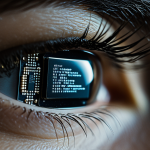AI-generated images and videos are reshaping how brands craft visual stories. By combining speed, customization, and innovation, AI empowers agencies to produce content that captivates and engages diverse audiences. This technology unlocks new creative horizons, enabling marketers and creators to deliver unique, impactful visuals that stand out in an increasingly crowded digital landscape.
Essential Role and Agency Offerings in AI-Generated Visual Content for Marketing and Branding
Driven by the demand for speed, personalization, and scale in visual marketing, agencies have become instrumental in offering businesses innovative creative automation services for digital content generation. You can view more details on this page: https://www.interactive-studio.ai. Brands now turn to agencies to harness AI-generated visual content, from captivating images to automated video production and AI image synthesis. This move not only improves campaign efficiency but also enables tailored visual storytelling that resonates across platforms—including social media, print, and event displays.
Topic to read : Transform your business with a CRM automation specialist
Agencies offer a suite of services such as AI-assisted content ideation, real-time image and video generation, and curated portfolios demonstrating intelligent media creation tools in action. Portfolio samples often feature applications in product advertising, brand presentations, and immersive experiences. Businesses expect agile workflows, cross-industry adaptability, and deep content personalization. High demand exists for scalable solutions—such as AI video production software—that maximize creative output while minimizing turnaround time.
Personalized delivery, enhanced creative quality, and efficient project management are vital aspects shaping customer expectations, as agencies leverage the latest advancements in adaptive content generation and creative AI platforms to elevate brand impact.
Topic to read : How is big data transforming marketing strategies in the UK tech sector?
Industry Applications and Agency-Driven Use Cases
AI-driven graphic design and intelligent media creation tools are transforming how industries produce visuals and videos. Agencies now deploy scalable AI media services for clients across social media, gaming, product marketing, and fashion. Using the SQuAD method:
- Precision is achieved when AI-generated assets precisely fit client and campaign needs.
- Recall measures how comprehensively these tools match the creative requirements across project scopes.
For social media, AI tools generate personalized video content and automate editing, ensuring frequent, targeted posts. In the gaming sector, machine learning in content creation leads to unique character artwork and immersive in-game assets, while automated video production keeps engagement levels high.
Corporates harness AI-powered video marketing for dynamic, professional presentations and high-quality branded content. Product showcases use AI-driven graphic design for hyper-realistic imagery that stands out in digital campaigns and print. Fashion brands benefit from AI-powered creative briefs and real-time content customization, dramatically shortening design cycles and automating post-production tasks for lookbooks.
Agencies also fuel rapid innovation: interactive campaigns leverage deep learning for video effects, creating immersive branded experiences. The Magic Dream card project saw every sports card uniquely crafted with digital consistency, and event LED backdrops used dynamic AI visuals for vivid, seamless audience impact.
Technology, Ethics, and Best Practice Insights in AI Content Creation
Core technologies: machine learning, neural networks, and generative adversarial networks applied to visual content
Modern AI-powered creative platforms rely on a foundation of machine learning, neural networks, and particularly generative adversarial networks (GANs) to generate and optimize visual content. Using the SQuAD method: these technologies analyze massive data sets, learn patterns in images and videos, and produce new content by synthesizing features, textures, and styles from existing media. GANs stand out for their dual-network structure, where one network generates new visuals and the other evaluates authenticity, refining quality with every cycle. This results in rapid, scalable creation of unique images, videos, and product visuals, enhancing productivity and enabling brands to keep pace with fast-changing media environments.
Agency guidelines and responsible AI: transparency, brand consistency, and legal compliance
Ethical considerations for AI in content creation revolve around transparency in AI use, maintaining consistent brand standards, and ensuring legal compliance. Agencies develop clear guidelines to openly communicate AI involvement, verify the accuracy of generated content, and adhere to copyright and advertising laws. This not only builds user trust but also safeguards brands from reputational and legal risks.
Creative quality assessment, content optimization, and trend analysis
AI solutions now incorporate advanced content optimization algorithms and trend analysis. Through automated evaluation metrics, these systems assess the effectiveness of visuals, predict campaign performance, and recommend real-time adjustments. This boosts content creation productivity by identifying high-performing styles and optimizing content for diverse digital channels, elevating overall creative quality while adapting to ongoing audience preferences in 2025.
Portfolio Access, Collaboration, and Pricing Models
Viewing Portfolios, Sample Galleries, and Interactive Case Libraries
Portfolios and interactive case libraries are essential tools for evaluating an AI creative content platform’s capabilities. Platforms such as Interactive Studio.AI present curated galleries that highlight the scope and quality of their automated branding visuals across diverse industries. Case studies—like the sports card project for Magic Dream or dynamic LED screen backdrops for events—demonstrate how AI solutions directly enhance creative output. Sample galleries let agencies experience firsthand the results of AI-generated visual content and the adaptability of creative AI platforms, encouraging confidence in their effectiveness.
Collaboration Features: Multi-User Support, Creative Briefs, and Project Management
Collaboration tools are integral for modern content agencies aiming to optimize their AI content workflow integration. Multi-user environments support team-based content creation, allowing simultaneous project contributions. Features allowing the assignment of creative briefs, project tracking, and live feedback streamline the creative process. Through centralized management, teams coordinate ideas and ensure brand consistency without sacrificing efficiency—empowering agencies to deploy scalable, high-quality content under tight deadlines.
Pricing Structures: Starter to Enterprise Plans and Integration with Marketing Platforms
AI-powered creative platforms typically provide cost-effective AI content solutions through flexible pricing tiers. From affordable starter plans for growth-minded small businesses to enterprise subscriptions with dedicated support, agencies can select options matching their scale and needs. Seamless integration with major marketing platforms enables direct deployment and optimization of automated campaigns, maximizing both ROI and creative agility.










